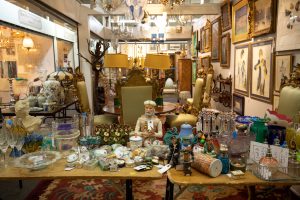Transforming your space with a fresh coat of paint can make a dramatic difference, but getting the results you want takes time and careful planning. In this blog post, CWP Painting in Orange shares expert tips to help you paint like a pro!
Learn how to prepare surfaces, invest in quality tools, understand layering and drying times, and more. With these essential painting tips, you’ll be well on your way to a flawless finish, especially with expert help from Stellar Painting & Remodeling.
1. Surface Preparation

Whether you’re a homeowner or a renter, painting your home’s interior can improve its beauty and increase its value. However, achieving the flawless finish seen on renovation shows is not as easy as it seems.
Proper surface preparation is the cornerstone of any painting project. It ensures that the paint adheres securely to the substrate, promoting durability and longevity. Unfortunately, skipping or rushing through this crucial step can ruin your results and lead to costly repaints.
Professional painters understand the importance of meticulously cleaning, caulking, and sanding surfaces before coating them. They also follow proper environmental guidelines to avoid issues like dust contamination and humidity fluctuations. Ultimately, this allows them to create an even and consistent finish that looks beautiful and lasts longer. They also use premium quality materials to ensure a smooth and polished appearance.
2. Invest in Quality Tools
Painting your home’s interior can be a cost effective way to update and enhance your home. However, achieving a flawless finish requires careful planning and expert application techniques. Proper surface prep, choosing the right paint, investing in quality tools, understanding layering and drying times, and maintaining a clean workspace are all key to a successful painting project.
Investing in high-quality paints and brushes will ensure better coverage and a superior finish. A high-quality synthetic bristle brush (Wooster or Purdy) will produce a smoother and more consistent finish than a budget plastic brush. Also, a high-quality roller frame (Wooster Sherlock or Purdy PowerLock) will roll a paint more smoothly than a cheap budget frame.
Also, don’t forget to take color swatches home to see how they look in your homes lighting. It’s always surprising how different a color looks in a store versus in your own home.
3. Choose the Right Paint
Once you’ve carefully chosen your paint color (and spent a day flipping through samples until your eyes are crossed), it’s important to choose the right kind of paint. You’ll also need to understand how to properly layer and dry your paint, which will help you achieve a flawless finish.
For example, you’ll need to use a roller with the appropriate nap size for your wall texture to ensure even coverage. And if you’re using multiple cans of the same color, it’s best to mix them together before applying them to your walls.
Experts also recommend lightly sanding rough surfaces before painting to make them smooth and ensure a high-quality finish. They’ll also teach you about various painting techniques, like cutting in, which is the process of carefully painting corners and edges with a brush instead of a roller.
4. Understand Layering and Drying Times
There is an art to residential interior painting that can drastically impact the outcome of your home’s transformation. Professionals understand the ins and outs of the process and have the tools, techniques, and knowledge to ensure a flawless finish every time.
They know that proper ventilation and drying times are essential to achieving a beautiful, long-lasting paint job. This includes allowing ample time between coats and providing adequate ventilation during the drying process (open windows, fans). They also know that it’s important to remove tape from walls before the paint dries, which helps create clean lines. Finally, they understand that color changes dramatically in natural and artificial light. This is why they always test swatches at different times of the day. This allows them to choose the most flattering shade for your space. They use this information to match your colors seamlessly for a polished, flawless finish.
5. Maintain a Clean Workspace
Painting can completely transform a room, adding a fresh new look and feel. However, it’s not as easy as renovation shows make it look! A flawless finish requires expert precision and careful preparation. Follow these interior painting tips for a professional-looking result:
Clean up before you start – move furniture, rugs and other clutter into another area of the house or onto tarps in the garage. This will save you time and ensure that your paint job doesn’t get ruined by smudges or drips.
Paint trim before walls – Henrique says this helps save time and provides a more uniform appearance. He suggests starting with the crown molding, then windows and their casings, doors and their casings, and finally wall paneling. Henrique also recommends using the “cut-in” technique along the corners. This freehand method requires a steady hand, but can produce more consistent results than covering edges with painter’s tape.
6. Pay Attention to Detail
A key trait that distinguishes a professional painter is their attention to detail. This includes meticulous surface preparation and precise application techniques that ensure a flawless finish. It’s these little things that elevate a simple painting project into an exceptional result.
For example, professional painters clear space and address wall imperfections before beginning the actual painting process. They also carefully cover furniture and floors to prevent staining. They’ll even clean their brushes before and after each use to avoid contamination.
Additionally, they work in small sections to maintain a wet edge and avoid lap marks (lines that appear a different color where the wet paint meets the dry). This technique helps create a seamless, uniform finish. Finally, they apply multiple coats to achieve optimal results and a long-lasting finish. They also follow industry standards when it comes to drying times, which can help prevent smudging and other common issues.
7. Do It Right the First Time
If you want a professional-looking paint job, it’s important to do it right the first time. This means properly preparing the surface, using quality tools, and understanding layering and drying times. It’s also important to choose the right paint and color.
Poor-quality paint can cause problems such as fish-eyeing, discoloration, or chipping. It’s also important to clean the walls before painting. This helps prevent mold growth, grease spots, and other issues that may affect the new finish. It’s also a good idea to test the colors in your home’s lighting. It’s often surprising how different a paint color looks in different lights. Also, always use a high-quality roller cover and brush to ensure the best results. This will help to avoid stippling and roller marks. Also, make sure to wrap your brushes and trays in plastic between coats.
8. Avoid Overspending
Whether you’re updating your entire home or simply refreshing focal walls and built-ins, a fresh coat of paint can transform a space and elevate your interior design. Residential interior painting is an art and science that requires expertise, precision, and the right tools to achieve flawless results.
High-quality paints offer superior durability, which can save you money over time by requiring fewer coats. However, it’s important to understand that not all paints are created equal.
Professionals use top-quality tools and follow the proper painting techniques for a flawless finish that lasts. They also take into account seasonal considerations, ensuring that your paint job is done in ideal conditions. This helps prevent moisture damage and allows the paint to dry evenly.
9. Use the “W” Technique
A fresh coat of paint can transform a home, but a flawless finish is critical for achieving the professional look that you desire. Mastering the proper techniques, tools, and preparation can make all the difference in a pristine finish that lasts for years to come.
For example, when painting large areas, it is important to work in small sections and maintain a “wet edge.” This will prevent lap marks and ensure that the paint blends seamlessly without any visible seams.
It is also crucial to use the right roller for your project. A short nap roller is best for smooth surfaces, while a medium or long nap roller is ideal for textured surfaces. Finally, be sure to inspect your work in natural light to identify any imperfections or missed spots. With a little practice, these expert painting tips can help you achieve a flawless finish for your next interior paint job.
10. Stay Organized
Paint can’t hide a bad surface, so it is important to take the time to repair imperfections prior to painting. Even minor dents and cracks should be patched to ensure a smooth, flawless finish. Additionally, make sure that the room is well-ventilated by opening windows and using fans to help reduce odors and speed up drying times.
Finally, it’s essential to create a clean workspace by removing furniture from the room whenever possible. If this isn’t possible, cover large pieces with plastic sheeting to protect them from paint splatters and drips. Also, be sure to take down mirrors and shelving, and remove switch plates and outlet covers for easier access. By taking these steps, you’ll be able to achieve a flawless finish on your interior painting project.


